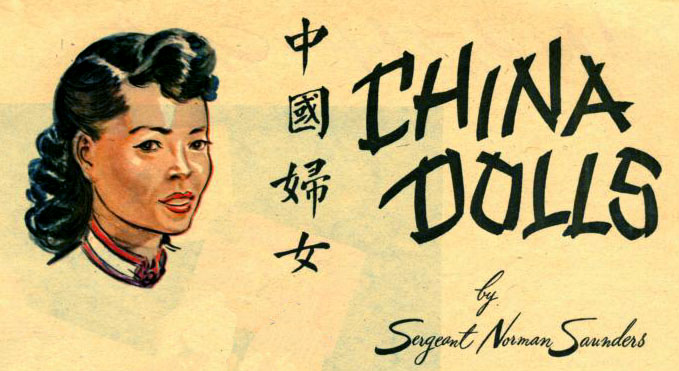

"CHINA DOLLS" by Sergeant Norman Saunders
"Things could be much worse" my mother always used to say. "Just suppose you had been born a little girl - and in China." She then went on to tell me that the best a Chinese girl could hope for was an early and watery grave. Little girls were taken out and drowned in the Yangtse River, since one girl child in any community was more than enough to glut the market for at least two generations. The Army corrected this early misconception when they decided to broaden my life with travel and sent me to the Orient.
I find, to my surprise, that China is well stocked with little girls and big ones as well. They exist in all the usual variations as regards size, shape and pigmentation - the exception being blondes. The two hundred million feminine souls in the Asiatic paddy plots are still a great surprise to me, since they look not at all like the typical Chinese we see in America. The reason is simple - the Chinese population of the United States migrated originally from two main districts, Shanghai and Canton. Thus they naturally show regional characteristics of a limited kind. We tend to forget that many of the provinces of China are remote and isolated, and until recently had little contact with the outside world. The limited emigration from the coastal provinces has shown us none of these women.
Thus, in my travels over the country, I discover that the hardest thing to find in China is someone who looks Chinese - by our standards at home.
The women of Tibetan provinces are tall and well-proportioned, apple-checked and, to me at least, they appear to resemble the Russians or Poles or Germans in facial modeling.
Down along the Burma border the gals are slimmer, but no less attractive. They are well built and dress to take advantage of the fact. In my opinion the most beautiful women in Asia live in a valley of Paradise and Death, just north of the Burma border. The fever and insects that accompany the monsoons drive the inhabitants to the safety of the hills each summer.